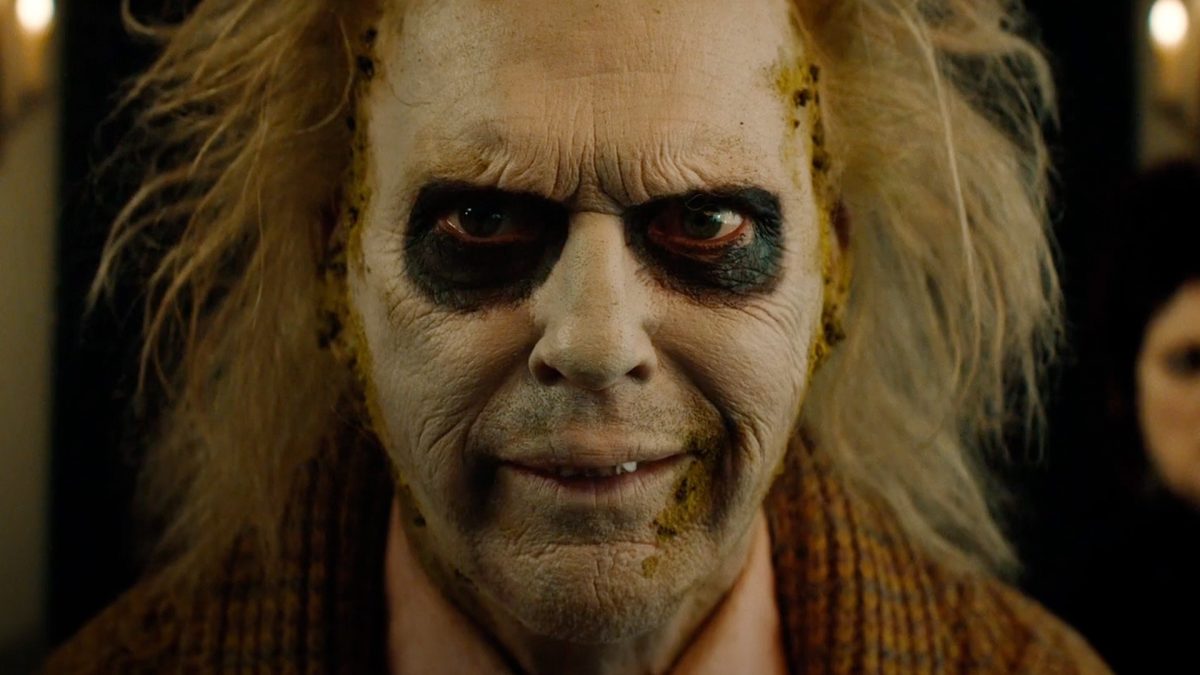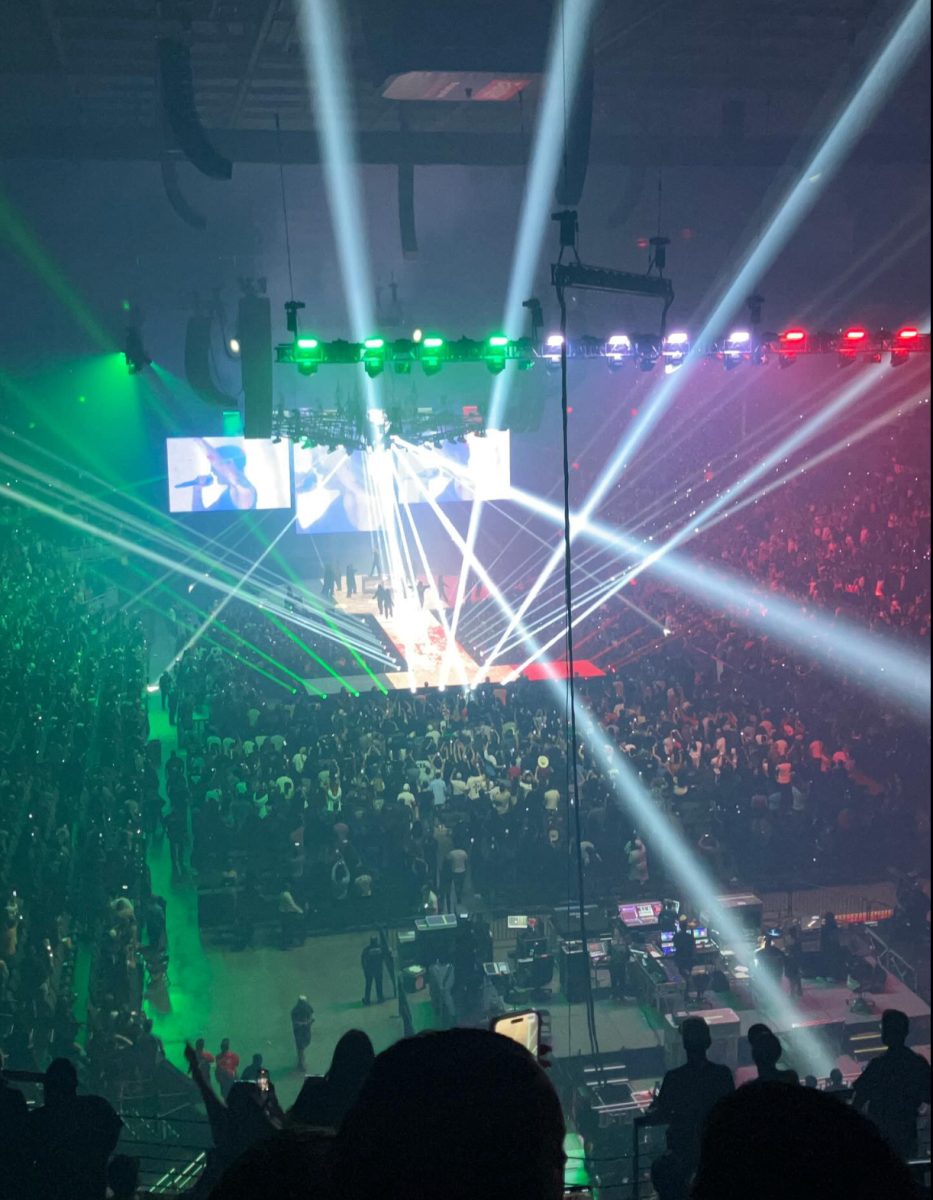For years, I’d heard about the massive hype behind Jonathan Demme’s “Stop Making Sense,” with many declaring the documentary covering a 1983 live performance of the band Talking Heads one of the greatest in the concert documentary genre. So, I was excited when it was announced that independent production and distribution company A24 was set to rerelease the film in select theaters for its 40th anniversary. I quickly snagged tickets for a Sep. 30 showing when I learned it was playing at the local Film Streams’ Dundee Theater. Although I had no real attachment to the band, I was interested to see if the film was really the masterpiece others had made it out to be.
I was not disappointed. “Stop Making Sense” is still an accomplishment in documentary filmmaking 40 years later. What impressed me the most was the sheer spectacle and energy present throughout the film.
“The film gets bigger as it gets longer, literally [sic] in a very literal sense. And the band keeps that energy; the audience keeps that energy. The lead singer of the band, everything feeds into this growth in the film,” one attendee said.
David Byrne initially appears on an empty stage with just his guitar and a boombox, playing an acoustic version of the band’s debut hit “Psycho Killer.” Over the course of the film, every element of the performance grows in scale. More band members join the stage with each successive song: bassist Tina Weymouth, drummer Chris Frantz and keyboardist Jerry Harrison. Several additional musicians are also added: backup singers Edna Holt and Lynn Mabry, percussionist Steve Scales, guitarist and vocalist Alex Wei and keyboardist Bernie Worrell.
As the film progresses, the sets also become more elaborate. Large projected screens are utilized, which display various decorative words and backdrops. The lighting changes, including a sequence featuring strobe lights and another in which a pitch-black stage is illuminated by a single floor lamp. The sets are particularly mesmerizing, giving the film an ethereal, dream-like quality to it. This is supported by the choreography, particularly the erratic movements of Byrne, which border on hypnotic during songs like “Life During Wartime.”
A stand-out moment of the movie is “Just the sheer ecstasy of David Byrne going nonverbal and entering into that song [“Slippery People”], flailing his limbs around full of what I can only imagine has to be a taste of the Holy Spirit. Life-changing to see and an aspiration to experience,” the attendee told me.
Byrne’s personality is one of the biggest factors that makes this movie stand out among a sea of concert documentaries.
Another factor that makes the film stand out is its cinematography, which differs from many other contemporary concert documentaries. Like many other aspects, as the film goes on, the cinematography becomes more unhinged and erratic as cinematographer Jordan Cronenweth (“Blade Runner”) works to capture the band’s eccentric and energetic performance. Unlike many other films, the movie has little reliance on crowd shots. It tends to direct its focus towards the stage more than anything, with zoom-ins, focus shots of band members’ faces and wide shots of the entire band playing. One detail that stands out to me is how the camera captures the progression and deterioration of the band as the film goes on. You can see every detail of sweat, grime and exhaustion on the band members, leading to an experience that resembles a live show. Moreover, the film is cut from four separate shows, all performed at Hollywood’s Pantages Theatre, but the editing masterfully transforms it into one cohesive performance.
The film’s seemingly endless escalation culminates in a legendary crescendo, as Byrne enters the stage clad in an almost comically oversized gray suit during the song “Girlfriend is Better.” The now-iconic attire shines in the moment, as Byrne capitalizes on his physicality and the stark contrast in size with his previous outfit to elevate the performance’s energy and spectacle to new heights. There’s a reason this moment has remained so iconic – it’s purely mesmerizing to watch the strange movements Byrne performs in the suit.
While another film might conclude with this iconic moment, “Stop Making Sense” is far from ordinary. The film holds its energy through two more songs before finally ending on a high but satisfying note. This features the band members leaving the stage and various crowd shots, emphasizing the scale and energy of the concert. A moment of the finale that stands out is when Byrne introduces all the performers on stage, retroactively feeling like a send-off to Talking Heads (who formally disbanded in 1991) as a whole, a celebration of everything that made the band unique.
In conclusion, “Stop Making Sense” stands as a testament to the boundless creativity and infectious energy of Byrne and Talking Heads. With its innovative staging, charismatic performances and unique cinematography, “Stop Making Sense” remains a cinematic gem that continues to captivate audiences, reaffirming its status as a classic in the realm of concert films. With the re-release pushed by A24, I can only hope that a new generation of moviegoers get an opportunity to experience this masterpiece.













Karen Chiarbos-Warner • Dec 7, 2023 at 8:49 pm
You sound like a journalist journalist!!! So proud of you!!!! See you soon ?